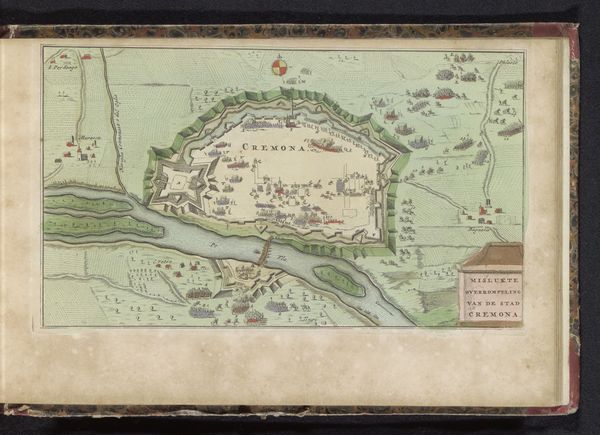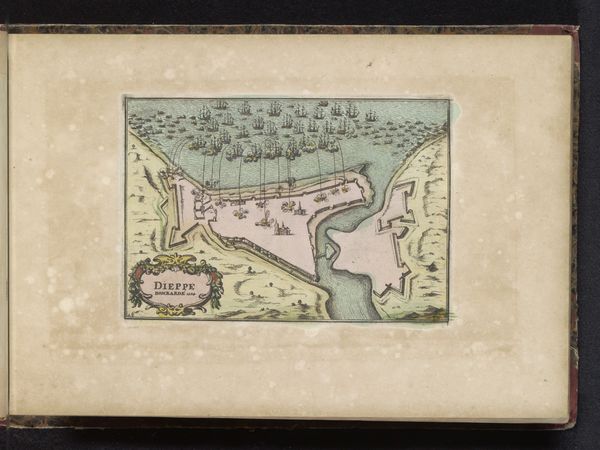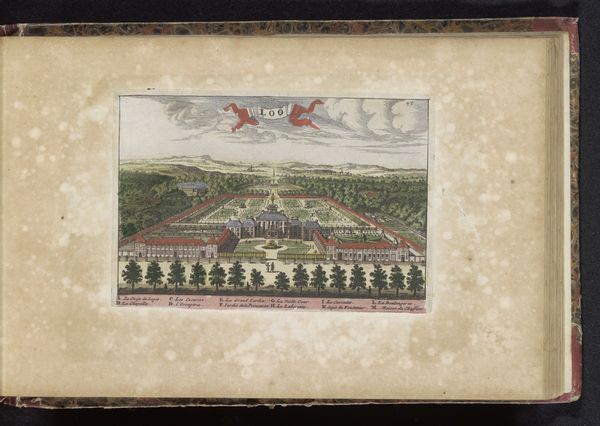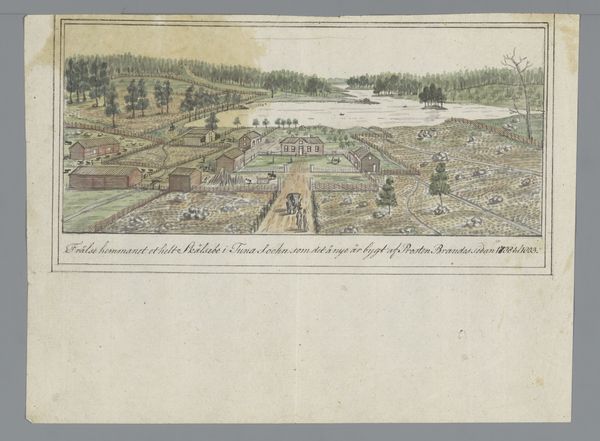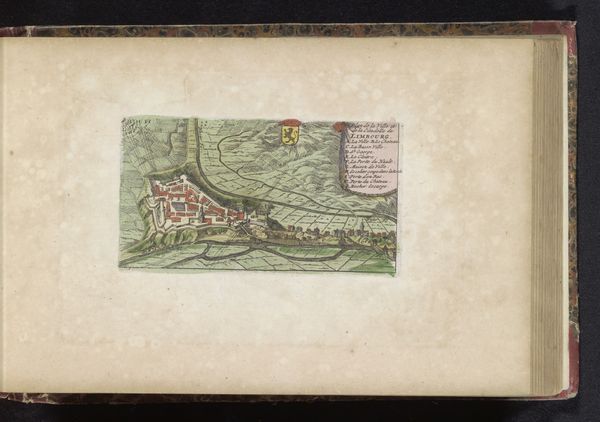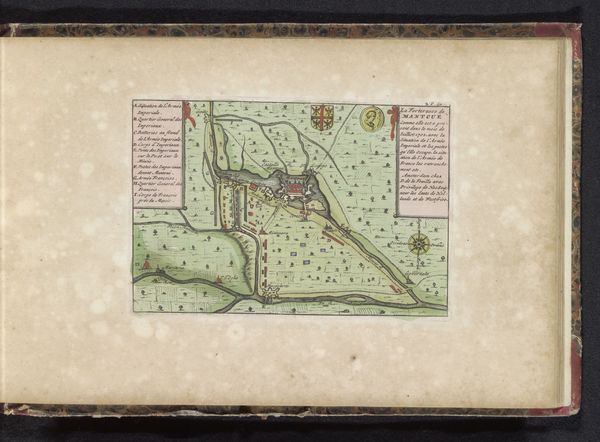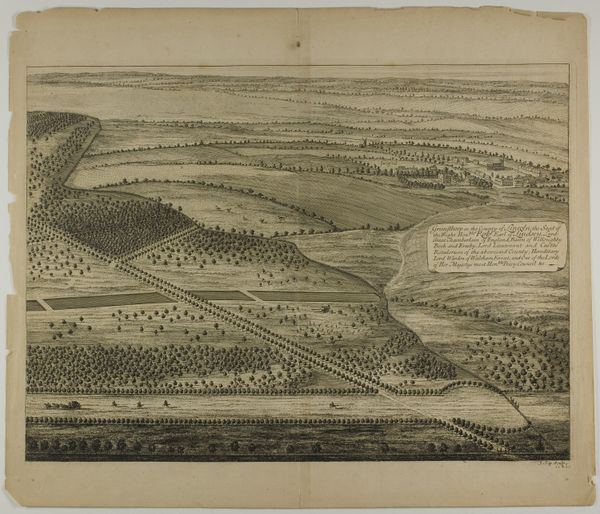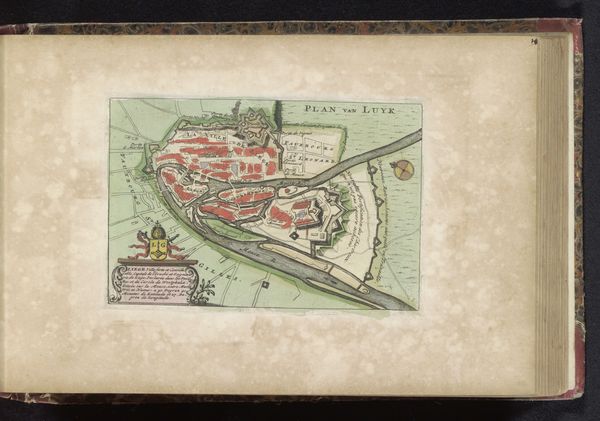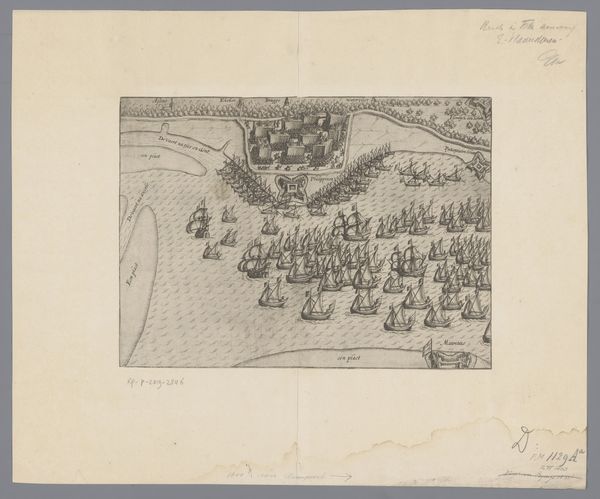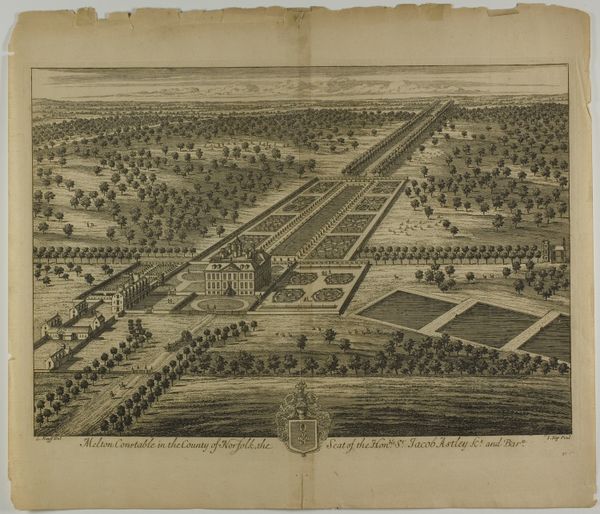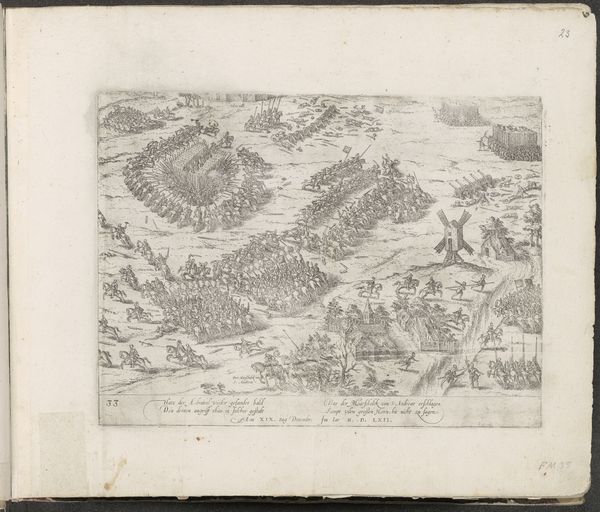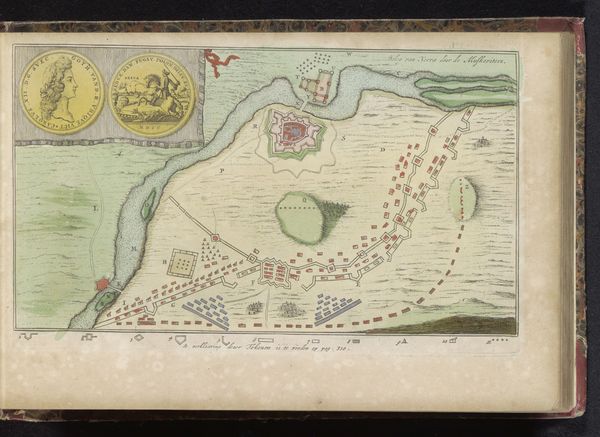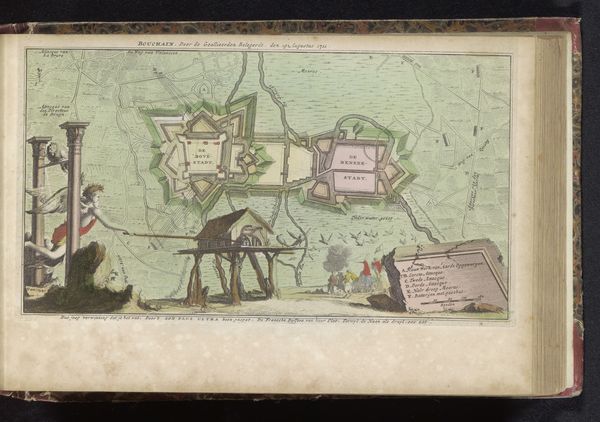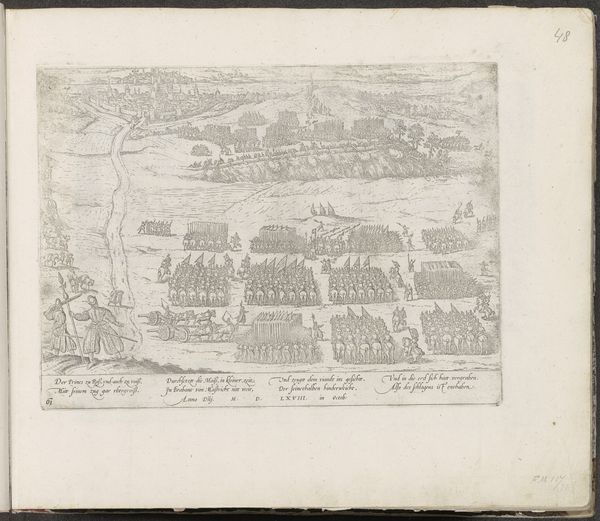
print, etching, paper, engraving
#
baroque
# print
#
etching
#
landscape
#
paper
#
coloured pencil
#
genre-painting
#
history-painting
#
engraving
Dimensions: height 132 mm, width 185 mm
Copyright: Rijks Museum: Open Domain
Curator: Looking at this etching titled "Slag bij Kaap la Hogue, 1692" which translates to the Battle of La Hogue, created around 1735, one is immediately struck by its panoramic view of naval conflict. Editor: Yes, my first impression is the sheer density of the composition. It feels overwhelming; all those ships rendered with such meticulous detail yet somehow creating a sense of chaotic movement. You can almost hear the cannon fire. Curator: The means of producing this image would have required highly skilled engravers working meticulously, transforming initial designs onto a copper plate. Each line, each tiny ship, represents hours of skilled labor. I'm curious about who was consuming prints like these; how did it shape public perceptions of naval power and empire building at the time? Editor: Absolutely. This isn't just a landscape or even a history painting in the conventional sense. It’s a visual assertion of power, primarily understood in the context of ongoing Anglo-French rivalry. Note how the Dutch are also included alongside the English victors. Who produced these engravings, who paid them, and who circulated these? It's a vital element in understanding how naval supremacy translated into cultural capital and national pride. Curator: Right. The materials themselves – paper, ink, the copper plate – have their own story. The relative affordability of prints like these meant that the message and visuals of military prowess could circulate among a far wider segment of the population compared to unique paintings made for the elite. Editor: Thinking intersectionally, there's the human cost often rendered invisible here. The lives lost in battle are abstracted into these neat rows of ships. Whose narratives were centered in this image, and more crucially, whose were silenced or erased? Curator: Indeed. These prints helped create a market for images of national triumph. Editor: That perspective—understanding this etching as part of a larger system of social and political forces—reveals that it does more than simply record a naval battle. It constructs an image of power, perpetuates particular historical narratives, and it participates in the making of a shared culture identity through visualizing the other! Curator: Precisely, analyzing the print, along with its historical setting is what can expand our view of a nation’s rise to power and culture making within its economy. Editor: Right, seeing how an artwork functions within social systems is critical for analyzing a moment.
Comments
No comments
Be the first to comment and join the conversation on the ultimate creative platform.
